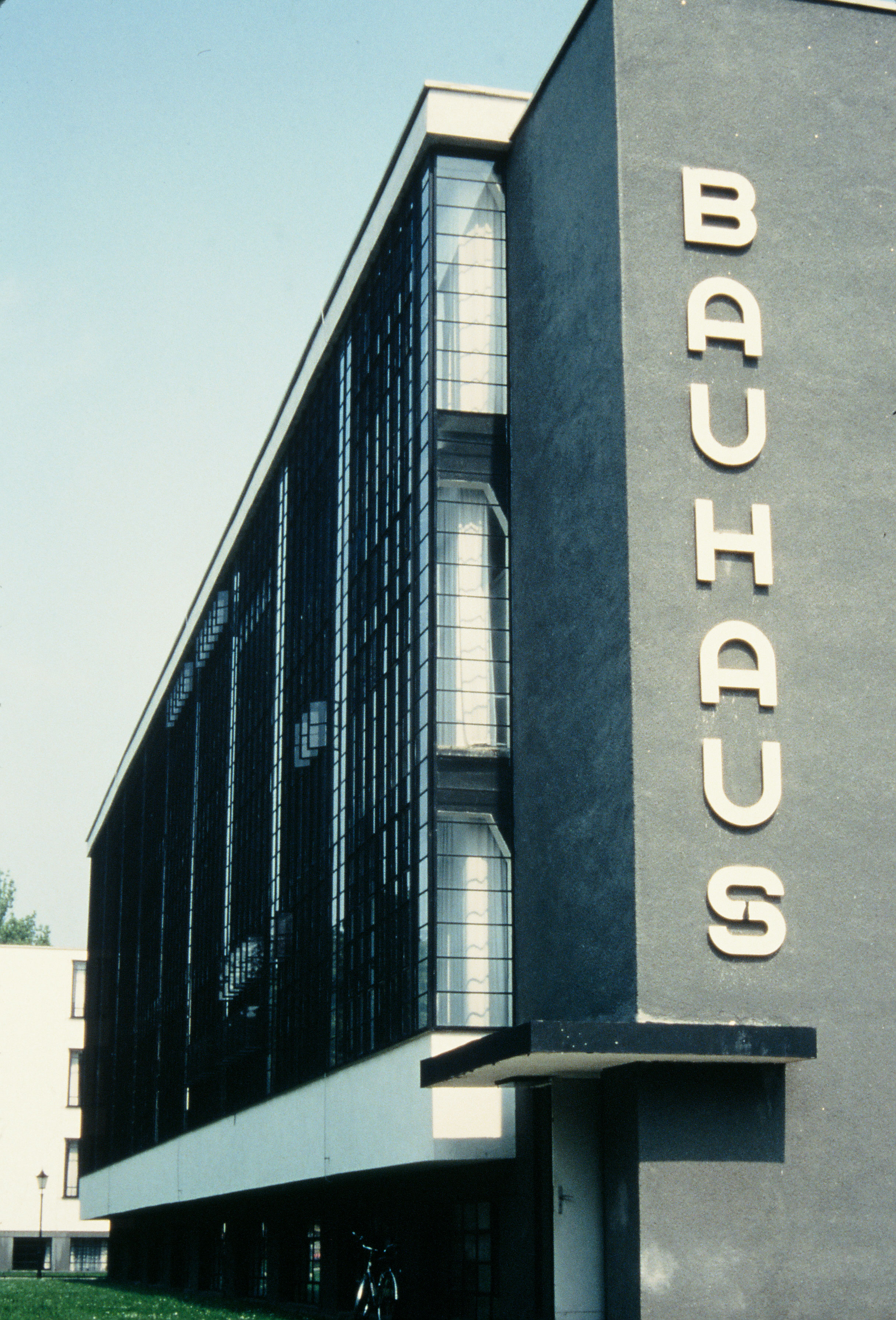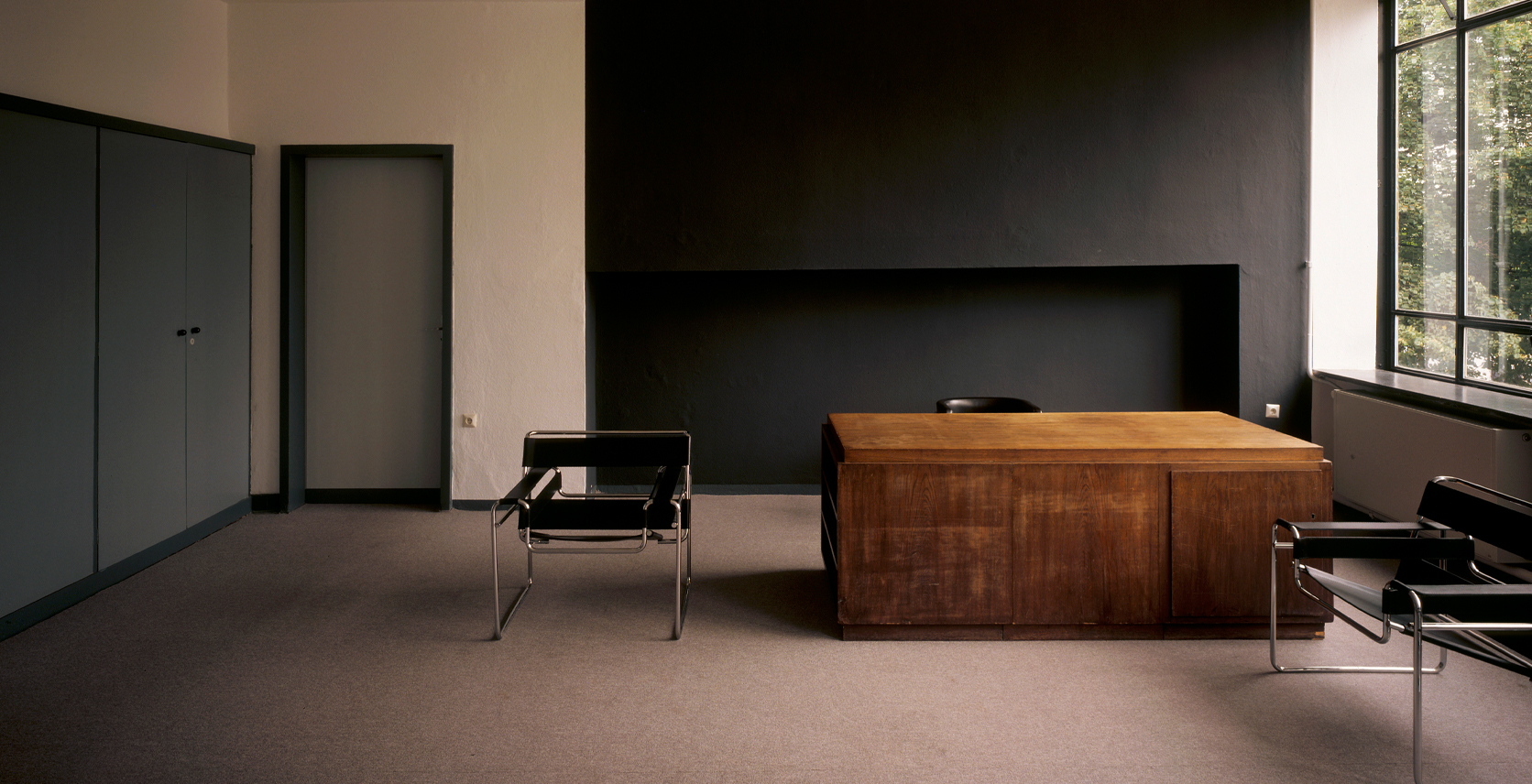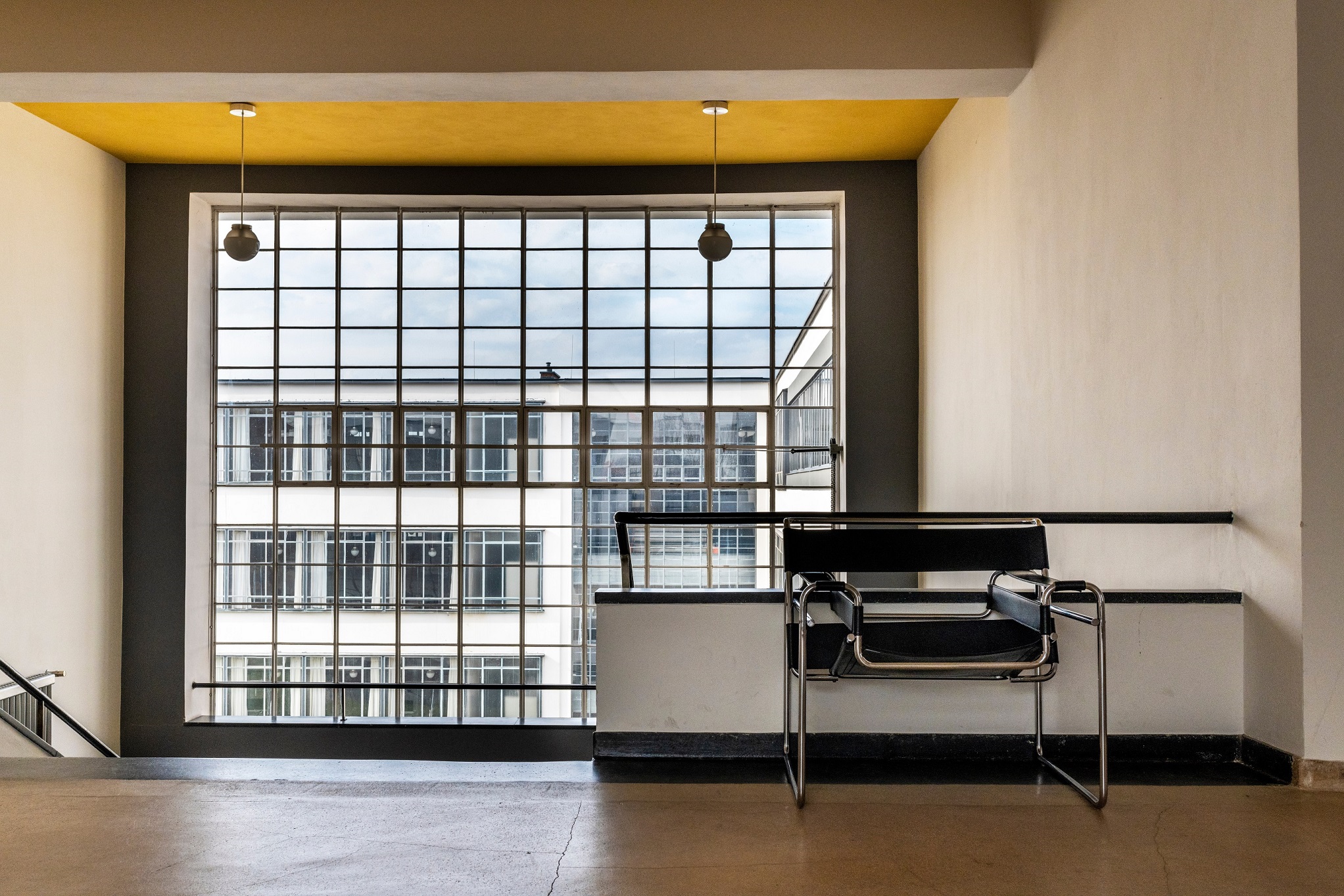
Bauhaus industrial design AP_VS_Architects Archinect
Beginning in 1923, the school's main objective shifted to focus on the importance of these design elements specifically for mass-production. It was at this time when Bauhaus adopted its new slogan, "Art into Industry." The works produced by the school's artisans were to reflect economic sensibility, simplicity, and mass production.

Infografia Bauhaus, o seu impacto no ensino do design Design Culture
The early Bauhaus concentrated primarily on hand-made crafts, but it soon became evident that, in order to survive, the school needed to reorient its goals toward industrial production. Bauhaus headmaster Walter Gropius asserted in the keynote address for the school exhibition of 1923, "The Bauhaus believes the machine to be our modern medium.

The Bauhaus
The Bauhaus was an art and design school founded in Germany in 1919. In its early years, the Bauhaus concentrated primarily on hand-made crafts, but it soon became evident that, in order to survive, the school needed to reorient its goals toward industrial production.

What Are the Characteristics of Modern Industrial Design?
The Bauhaus School of design taught design fundamentals, color theory, fine art, and of course, the famed architecture program. There was a wide array of workshops available from painting to weaving, interior design, industrial design, and beyond. The school nurtured many famous furniture designers and artists.

¿Qué fue el movimiento Bauhaus? Arte y diseño diferenciart
by the Bauhaus staff, buildings, project®, influence® on contemporary design, and influences on the educational centers of the United States. The Bauhaus principles, curriculum, and methods of instruction for the education of a designer will be utilized to make suggestions for improve-ment of design in college industrial arts program®, which is

Bauhaus, First School of Industrial Design. Dessau, Germany Editorial Photo Image of germany
100 Years Of Bauhaus Industrial Design. By Iain McCall 25th June 2019. Bauhaus, for many, has been one of the most influential, if not the most influential modernist art schools of the last century. Modern art has been shaped by a range of genres from Surrealism to Abstract Expressionism but each of these heavily centred around painting.

Marianne Brandt's tea extract jug from 1924 is considered one of the most important icons of
M odern Industrial Design: Bauhaus. Bauhaus was created by Walter Gropius in Weimar, Germany 1919 with the aim to bridge the gap between art and industry by combining both crafts and fine arts.

A Hundred Years Ago, the Bauhaus Was a Radical Idea. Today, It’s Everywhere. Sharp Magazine
In 1940, industrial design was a relatively new profession derived from the work of German designers from the Dessau Bauhaus. Georgia Tech's Department of Architecture recognized the impact of industrial design as a discipline and started offering classes that year. The department even hired a professor from the New Bauhaus in Chicago to teach.

Bauhaus Industrial Design OFFICIAL INDUSTRIAL A20
Feb. 4, 2019. ON APRIL 11, 1933, the architect Ludwig Mies van der Rohe stepped off the tram in the Steglitz neighborhood in southwest Berlin, crossed a bridge and found that his place of work had.

Bauhaus Industrial Design OFFICIAL INDUSTRIAL A20
The curator of the Berlin Bauhaus Archive Klaus Weber has called Brandt's Model No. MT 49 "Bauhaus in a Nutshell", a work which exemplifies the school's industrial design aesthetic and emphasis upon functionality. One of Brandt's prototypes for the teapot set a record price for Bauhaus objects at Sotheby's in 2007.

How the Staatliches Bauhaus Fused Art and Industrial Design Industrial Outpost
Try a glass railing. Give your staircase a makeover with glass panels. Arterberry and Danny Spears of Captex Construction are all about mixing materials like black metal, bleached wood, and glass.

Exploring the birthplace of Bauhaus, a German movement that changed design Los Angeles Times
Bauhaus Industrial. The foundation of modernism, the Bauhaus movement of the 1920s rejected the ornate and ornamental in favor of the functional, paring design to its essence and pioneering the use of steel, glass, and concrete.

Bauhaus Industrial Design OFFICIAL INDUSTRIAL A20
Bauhaus. Bauhaus was an influential art and design movement that began in 1919 in Weimar, Germany. The movement encouraged teachers and students to pursue their crafts together in design studios.

Browse All &10
Sleek, pared-back, industrial elegance - that's how most of us think of Bauhaus, the modernist design group born in Germany in 1919. But that was only one side of this short-lived but.

Elements
The Bauhaus movement had a profound influence on subsequent developments in art, architecture, graphic design, interior design, industrial design, and typography. Staff at the Bauhaus included prominent artists such as Paul Klee, Wassily Kandinsky, Gunta Stölzl, and László Moholy-Nagy at various points.

Bauhaus, First School of Industrial Design. Dessau, Germany Editorial Image Image of
The students at the Bauhaus were concerned with much more than industrial design, furniture design, and architecture—all of the creative arts and crafts were studied and practiced: painting.